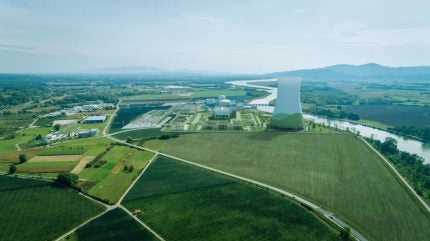
At its regular monthly meeting with journalists, Slovenia’s state-owned power company, GEN energija detailed preparations it was making ahead of a referendum planned later this year on construction of the new JEK2 NPP.
Slovenia plans to build a new nuclear plant (Krško-II) adjacent to the existing NPP, a 696 MWe pressurised water reactor operated by Slovenian nuclear utility Nuklearna Elektrarna Krško (NEK) and co-owned by neighbouring Croatia. The plant generates about a third of the Slovenia’s electricity. Krško-II, the JEK2 project, would have up to 2400 MWe capacity. The project will be subject of a referendum later this year. GEN energija CEO Dejan Paravan said in 2023 that three technology providers were being considered – US Westinghouse, France’s EDF and Korea Hydro & Nuclear Power.
GEN energija presented research showing that the location of the existing Krsko NPP and the planned JEK2 is safe from the point of view of seismic activity and said it will also publish further studies related to various aspects of the JEK2 project before a final decision is taken. The company also noted the success of the travelling interactive presentation of the JEK2 project, which is visiting places throughout Slovenia in June and July.
GEN energija said that to assess the seismic risk in the area of the existing Krsko NPP and the planned location of JEK2, two types of analysis had been used based on internationally established methodology – the probabilistic seismic hazard analysis PSHA) and the probabilistic fault displacement hazard analysis (PFDHA).
A PSHA was ordered by NEK in 1994 and 2004. From 2008 to 2011, a project of geotechnical, geological and seismological research was carried out for a new NPP in the Krška basin. At the conclusion of this project, one of the four partners (France’s IRSN – Institut de Radioprotection et de Sûreté Nucléaire) expressed concerns about a possible active fault and suggested performing a PFDHA.
The other project partners – French Geological Survey (BRGM – Bureau de Recherches Géologiques et Minières), Slovenia’s National Building & Civil Engineering Institute (ZAG – Zavod za gradbeništvo Slovenije) and the Geological Survey of Slovenia (GeoZS – Geološki zavod Slovenije) – did not express similar concerns. However, GEN energija commissioned the PFDHA and an international independent review. The research showed, and the review confirmed, that the probability of fault movements was insignificant.
This was followed by another PFDHA in 2013, which concluded that for both the eastern and western locations in Krško, there were extremely small, negligible risks of exceeding surface displacements for engineering needs. Both the authors of the study and the independent international reviewers agreed that the danger was negligible and did not pose a risk to the existing or to the new nuclear power plant.
Currently, a large-scale PSHA project is underway, which began in 2015. The current final third phase of the project is undergoing an independent international review, which will be completed later this year.
GEN energija said that, at the request of the Ministry of the Environment, Space & Energy, a series of documents related to various studies and reviews will be published on the JEK2 website by October to enable citizens to make an informed decision in the referendum. These will include:
- Study of the connection of JEK2 to the Slovenian electricity system;
- Initiative for the preparation of the National Spatial Plan for JEK2;
- International review of the input data of the economic analysis of the JEK2 project;
- Study of earthquake safety;
- Study of flood safety and study of wider direct and indirect economic impacts of the JEK2 project;
- Presentation of financial and security risks in importing nuclear fuel;
- Information on the planned handling of waste from JEK2 and related costs.






